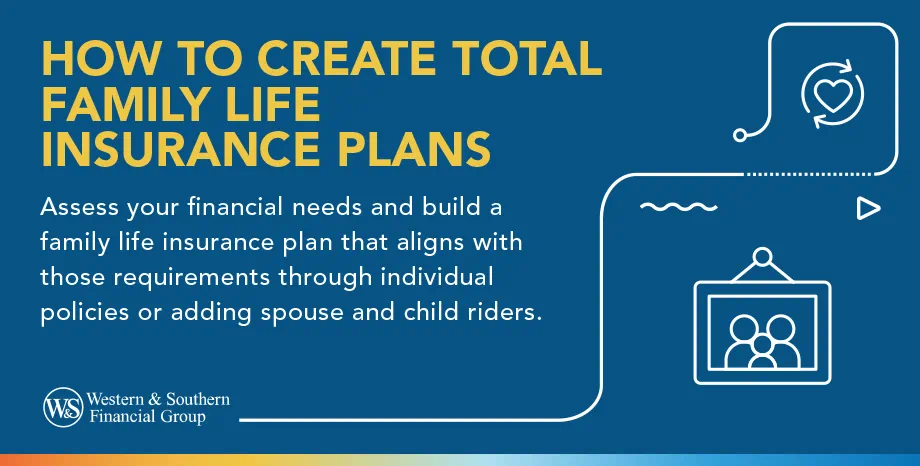

Table of Contents
Key Takeaways
- Families with children often purchase life insurance to provide financial support if a parent passes away.
- Nonworking spouses and partners can use life insurance to cover costs and replace their contributions to household and childrearing tasks.
- Family life insurance plans can be created by having each family member apply for their policy or by adding family members to one person's policy.
- Family life insurance plans offer convenience and future options but may have lower coverage limits and require a minimum purchase.
- It's important to set up family life insurance early to ensure eligibility and affordability and consider options for upgrading or adjusting coverage in the future.
Once the little one has arrived, it can be useful to change your approach to decision-making. You may find yourself factoring in how certain choices will affect your entire family, not just you. At this life stage, some people start to think about covering their entire family with different insurance policies.
Here's what to know about family life insurance plans, how they work and their potential pros and cons.
Why Might Families Need Life Insurance?
Life insurance can be useful at any age, but it's often purchased when people have children. That way, should a parent pass away before their kids have grown up, the children receive a death benefit. This can provide money for the everyday things they need.
Working parents usually want to have life insurance to replace their income if something were to happen to them. But nonworking spouses and partners can also benefit from having coverage. Life insurance could help cover costs. If they take care of household and childrearing tasks and were to die, the working spouse may need to pay someone to fill their role.
There are also advantages to minor children having coverage. If a child passes away, the cost of a funeral can be a tough financial burden that life insurance can help with. Another benefit is that the child may be able to keep the coverage when they get older and not have to worry about qualifying in the future.
What Are Family Life Insurance Plans?
Family life insurance is a broad term meaning all members of a family have coverage. If a covered family member were to die, a death benefit would provide financial support to the beneficiaries.
One way to get family life insurance is by having each member apply for their own separate policy. Another is to have one person apply for a policy and then add on the other members of the family.
How Do You Build These Plans?
You first need to apply for your own individual policy. Figure out how much coverage you need for yourself as well as what type you would like. You might decide you want a temporary term policy, which is less expensive but expires, or a permanent policy, which is more expensive but does not expire.
As part of your application, you can list what life insurance riders you'd like to include. To create a total family plan, you would add spousal and child riders, including how much coverage you want for them.
As the main applicant, you likely would need medical underwriting to qualify for the coverage. Your spouse may need to take a medical exam as well. For children, there is usually no underwriting or only basic information is needed, like answering a few questions on the application.
What Are the Potential Benefits & Drawbacks?
Family life insurance plans can be more convenient and easier to set up than managing multiple policies. You only need to apply once and will have one monthly premium. If your spouse has health issues, they may have a better chance of qualifying under the spousal rider than if they applied on their own. These policies also keep options open for your family members. They may be able to convert them to their own individual policy later without a new medical exam.
A potential downside to family riders is that there can be lower coverage limits for spouses and children than if they were to apply on their own. There may also be rules requiring the main applicant to buy a certain amount of insurance before setting up family coverage.
If you die as the main policyholder, your family members could lose their coverage. While they may be able to convert the coverage into their own policy, the cost could end up being more than what they were paying in the family plan. If your spouse is in good health, they may want to apply for their own individual policy at the same time to see how the costs compare. With an individual policy, they wouldn't lose coverage after your death or a divorce.
When Is a Good Time to Set Up Family Life Insurance?
Applying for life insurance may involve getting a medical exam. If you wait until later in life, you may develop a health issue that disqualifies you or increases your costs. Accordingly, it's typically a good idea to act as soon as possible.
If you're concerned about affording the policy you want right now, you can consider buying less expensive coverage now that can be upgraded later. For example, you might select a term policy that converts to permanent one or a policy that allows you to increase the death benefit without first getting a health exam.
For more information on setting up life insurance for your family, consider meeting with a financial professional to discuss your options and receive price quotes.















